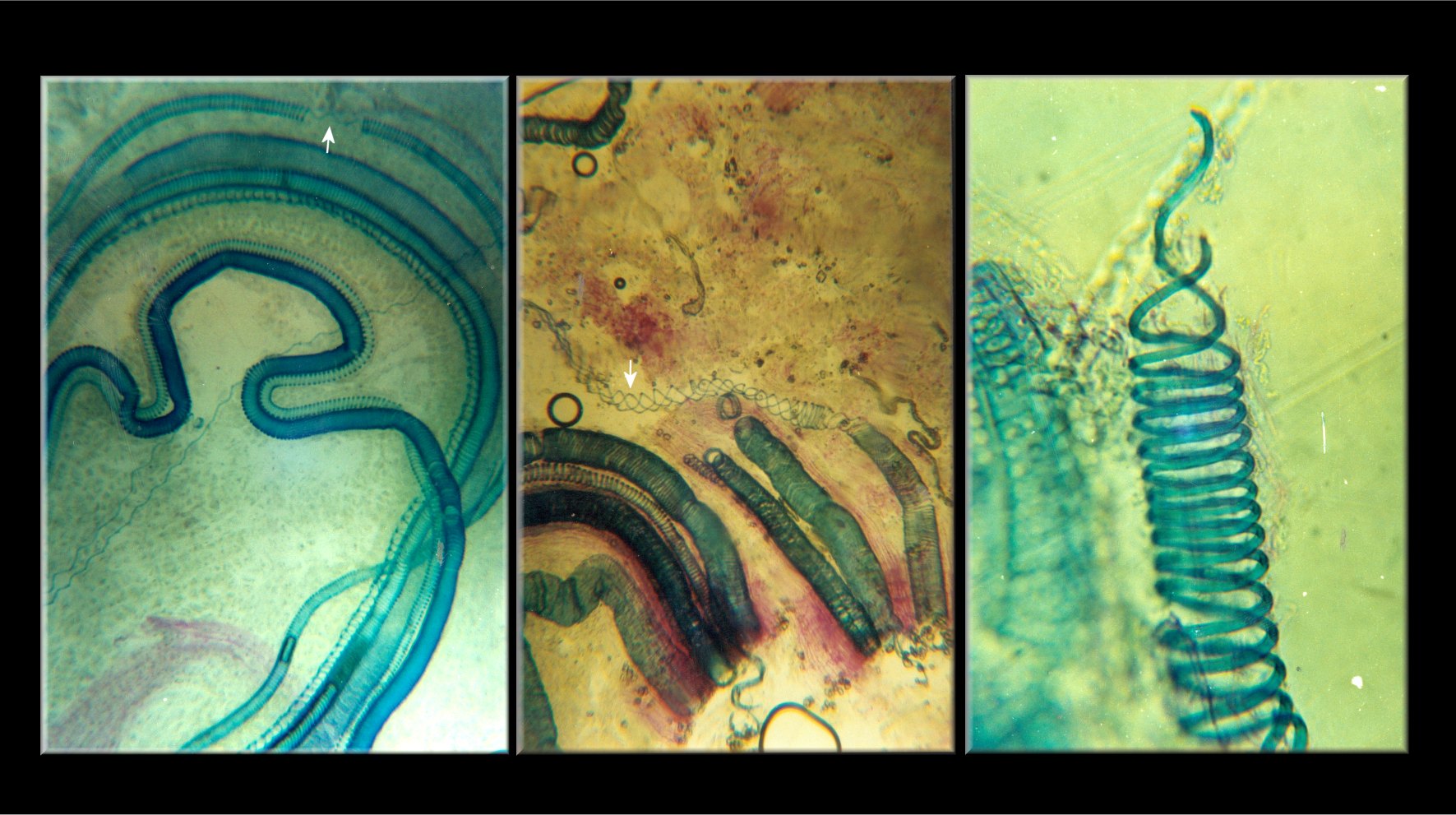|
Cinetodus Crassilabris
The thick-lipped catfish (''Cinetodus crassilabris'') is a species of catfish in the family Ariidae. It was described by Edward Pierson Ramsay and James Douglas Ogilby in 1886, originally under the genus ''Hemipimelodus''. It is found in freshwater rivers in New Guinea. It reaches a standard length of . Its diet consists of insects and vascular plant Vascular plants (), also called tracheophytes () or collectively Tracheophyta (), form a large group of land plants ( accepted known species) that have lignified tissues (the xylem) for conducting water and minerals throughout the plant. They al ...s. at www.fishbase.org. References [...More Info...] [...Related Items...] OR: [Wikipedia] [Google] [Baidu] |
Species
In biology, a species is the basic unit of Taxonomy (biology), classification and a taxonomic rank of an organism, as well as a unit of biodiversity. A species is often defined as the largest group of organisms in which any two individuals of the appropriate sexes or mating types can reproduction, produce Fertility, fertile offspring, typically by sexual reproduction. Other ways of defining species include their karyotype, DNA sequence, morphology (biology), morphology, behaviour or ecological niche. In addition, paleontologists use the concept of the chronospecies since fossil reproduction cannot be examined. The most recent rigorous estimate for the total number of species of eukaryotes is between 8 and 8.7 million. However, only about 14% of these had been described by 2011. All species (except viruses) are given a binomial nomenclature, two-part name, a "binomial". The first part of a binomial is the genus to which the species belongs. The second part is called the specifi ... [...More Info...] [...Related Items...] OR: [Wikipedia] [Google] [Baidu] |
Catfish
Catfish (or catfishes; order Siluriformes or Nematognathi) are a diverse group of ray-finned fish. Named for their prominent barbels, which resemble a cat's whiskers, catfish range in size and behavior from the three largest species alive, the Mekong giant catfish from Southeast Asia, the wels catfish of Eurasia, and the piraíba of South America, to detritivores (species that eat dead material on the bottom), and even to a tiny parasitic species commonly called the candiru, ''Vandellia cirrhosa''. Neither the armour-plated types nor the naked types have scales. Despite their name, not all catfish have prominent barbels or "whiskers". Members of the Siluriformes order are defined by features of the skull and swimbladder. Catfish are of considerable commercial importance; many of the larger species are farmed or fished for food. Many of the smaller species, particularly the genus '' Corydoras'', are important in the aquarium hobby. Many catfish are nocturnal, [...More Info...] [...Related Items...] OR: [Wikipedia] [Google] [Baidu] |
Ariidae
The Ariidae or ariid catfish are a family of catfish that mainly live in marine waters with many freshwater and brackish water species. They are found worldwide in tropical to warm temperate zones. The family includes about 143 species. Taxonomy The relationships of this family are not yet clear. Two of the genera, ''Gogo'' and '' Ancharius'', have been moved to a separate family called Anchariidae. The Ariidae are divided into three subfamilies: '' Galeichthys'' is the only genus classified in the subfamily Galeichthyinae and similarly '' Bagre'' is the only genus in the subfamily Bagreinae, while the rest of the genera are classified in the subfamily Ariinae. Previously, the family Ariidae has been grouped in the superfamily Doradoidea, but then it was moved into Bagroidea (along with Austroglanididae, Claroteidae, Schilbeidae, Pangasiidae, Bagridae, Malapteruridae, and Pimelodidae. It has also been classified in a superfamily Arioidea containing Ariidae and Anchariidae ... [...More Info...] [...Related Items...] OR: [Wikipedia] [Google] [Baidu] |
Edward Pierson Ramsay
Edward Pierson Ramsay FRSEFLS LLD (3 December 1842 – 16 December 1916) was an Australian zoologist who specialised in ornithology. Early life Ramsay was born in Dobroyd Estate, Long Cove, Sydney, and educated at St Mark's Collegiate School, The King's School, Parramatta. He studied medicine from 1863 to 1865 at the University of Sydney but did not graduate. Career Although he never had had any formal scientific training in zoology, Ramsay had a keen interest in natural history and published many papers. In 1863 he was treasurer of the Entomological Society of New South Wales, he contributed a paper on the "Oology of Australia" to the Philosophical Society in July 1865, and when this society was merged into the Royal Society of New South Wales, he was made a life member in recognition of the work he had done for the Philosophical Society. In 1868 Ramsay joined with his brothers in a sugar-growing plantation in Queensland which, however, was not successful. Ramsay was one of ... [...More Info...] [...Related Items...] OR: [Wikipedia] [Google] [Baidu] |
James Douglas Ogilby
James Douglas Ogilby (16 February 1853 – 11 August 1925) was an Australian ichthyologist and herpetologist. Ogilby was born in Belfast, Ireland, and was the son of zoologist William Ogilby and his wife Adelaide, née Douglas. He received his education at Winchester College, England, and Trinity College, Dublin. Ogilby worked for the British Museum before joining the Australian Museum in Sydney. After being let go for drunkenness in 1890, he picked up contract work before joining the Queensland Museum in Brisbane circa 1903. He was the author of numerous scientific papers on reptiles, and he described a new species of turtle and several new species of lizard Lizards are a widespread group of squamate reptiles, with over 7,000 species, ranging across all continents except Antarctica, as well as most oceanic island chains. The group is paraphyletic since it excludes the snakes and Amphisbaenia al ...s. Ogilby died on 11 August 1925 and was buried at Toowong ... [...More Info...] [...Related Items...] OR: [Wikipedia] [Google] [Baidu] |
Freshwater
Fresh water or freshwater is any naturally occurring liquid or frozen water containing low concentrations of dissolved salts and other total dissolved solids. Although the term specifically excludes seawater and brackish water, it does include non- salty mineral-rich waters such as chalybeate springs. Fresh water may encompass frozen and meltwater in ice sheets, ice caps, glaciers, snowfields and icebergs, natural precipitations such as rainfall, snowfall, hail/ sleet and graupel, and surface runoffs that form inland bodies of water such as wetlands, ponds, lakes, rivers, streams, as well as groundwater contained in aquifers, subterranean rivers and lakes. Fresh water is the water resource that is of the most and immediate use to humans. Water is critical to the survival of all living organisms. Many organisms can thrive on salt water, but the great majority of higher plants and most insects, amphibians, reptiles, mammals and birds need fresh water ... [...More Info...] [...Related Items...] OR: [Wikipedia] [Google] [Baidu] |
New Guinea
New Guinea (; Hiri Motu: ''Niu Gini''; id, Papua, or , historically ) is the world's second-largest island with an area of . Located in Oceania in the southwestern Pacific Ocean, the island is separated from Australia by the wide Torres Strait, though both landmasses lie on the same continental shelf. Numerous smaller islands are located to the west and east. The eastern half of the island is the major land mass of the independent state of Papua New Guinea. The western half, known as Western New Guinea, forms a part of Indonesia and is organized as the provinces of Papua, Central Papua, Highland Papua, South Papua, Southwest Papua, and West Papua. The largest cities on the island are Jayapura (capital of Papua, Indonesia) and Port Moresby (capital of Papua New Guinea). Names The island has been known by various names: The name ''Papua'' was used to refer to parts of the island before contact with the West. Its etymology is unclear; one theory states that ... [...More Info...] [...Related Items...] OR: [Wikipedia] [Google] [Baidu] |
Standard Length
Fish measurement is the measuring of individual fish and various parts of their anatomies. These data are used in many areas of ichthyology, including taxonomy and fisheries biology. Overall length * Standard length (SL) is the length of a fish measured from the tip of the snout to the posterior end of the last vertebra or to the posterior end of the midlateral portion of the hypural plate. Simply put, this measurement excludes the length of the caudal (tail) fin. * Total length (TL) is the length of a fish measured from the tip of the snout to the tip of the longer lobe of the caudal fin, usually measured with the lobes compressed along the midline. It is a straight-line measure, not measured over the curve of the body. Standard length measurements are used with Teleostei (most bony fish), while total length measurements are used with Myxini (hagfish), Petromyzontiformes (lampreys), and (usually) Elasmobranchii (shark Sharks are a group of elasmobranch fish characterize ... [...More Info...] [...Related Items...] OR: [Wikipedia] [Google] [Baidu] |
Vascular Plant
Vascular plants (), also called tracheophytes () or collectively Tracheophyta (), form a large group of land plants ( accepted known species) that have lignified tissues (the xylem) for conducting water and minerals throughout the plant. They also have a specialized non-lignified tissue (the phloem) to conduct products of photosynthesis. Vascular plants include the clubmosses, horsetails, ferns, gymnosperms (including conifers), and angiosperms (flowering plants). Scientific names for the group include Tracheophyta, Tracheobionta and Equisetopsida ''sensu lato''. Some early land plants (the rhyniophytes) had less developed vascular tissue; the term eutracheophyte has been used for all other vascular plants, including all living ones. Historically, vascular plants were known as "higher plants", as it was believed that they were further evolved than other plants due to being more complex organisms. However, this is an antiquated remnant of the obsolete scala naturae, an ... [...More Info...] [...Related Items...] OR: [Wikipedia] [Google] [Baidu] |
Cinetodus
''Cinetodus'' is a genus of sea catfishes ( order Siluriformes) of the family Ariidae. These species originate from brackish and fresh waters of Irian Jaya, southern New Guinea and northern Australia. Species This genus currently contains three described species: * ''Cinetodus carinatus'' ( M. C. W. Weber, 1913) – comb-spined catfish * ''Cinetodus conorhynchus'' (M. C. W. Weber, 1913) – Lorentz catfish * ''Cinetodus crassilabris'' ( E. P. Ramsay & J. D. Ogilby, 1886) – thick-lipped catfish * ''Cinetodus froggatti ''Cinetodus froggatti'', known as Froggatt's catfish or smallmouthed salmon catfish, is a species of sea catfish The Ariidae or ariid catfish are a family of catfish that mainly live in marine waters with many freshwater and brackish water sp ...'' (E. P. Ramsay & J. D. Ogilby, 1886) – Froggatt's catfish, smallmouthed salmon catfish References Fish of New Guinea Fish of Australia Catfish genera Taxa named by James Douglas Ogilby Taxonomy arti ... [...More Info...] [...Related Items...] OR: [Wikipedia] [Google] [Baidu] |
Fish Described In 1886
Fish are aquatic, craniate, gill-bearing animals that lack limbs with digits. Included in this definition are the living hagfish, lampreys, and cartilaginous and bony fish as well as various extinct related groups. Approximately 95% of living fish species are ray-finned fish, belonging to the class Actinopterygii, with around 99% of those being teleosts. The earliest organisms that can be classified as fish were soft-bodied chordates that first appeared during the Cambrian period. Although they lacked a true spine, they possessed notochords which allowed them to be more agile than their invertebrate counterparts. Fish would continue to evolve through the Paleozoic era, diversifying into a wide variety of forms. Many fish of the Paleozoic developed external armor that protected them from predators. The first fish with jaws appeared in the Silurian period, after which many (such as sharks) became formidable marine predators rather than just the prey of arthropods. Most ... [...More Info...] [...Related Items...] OR: [Wikipedia] [Google] [Baidu] |







